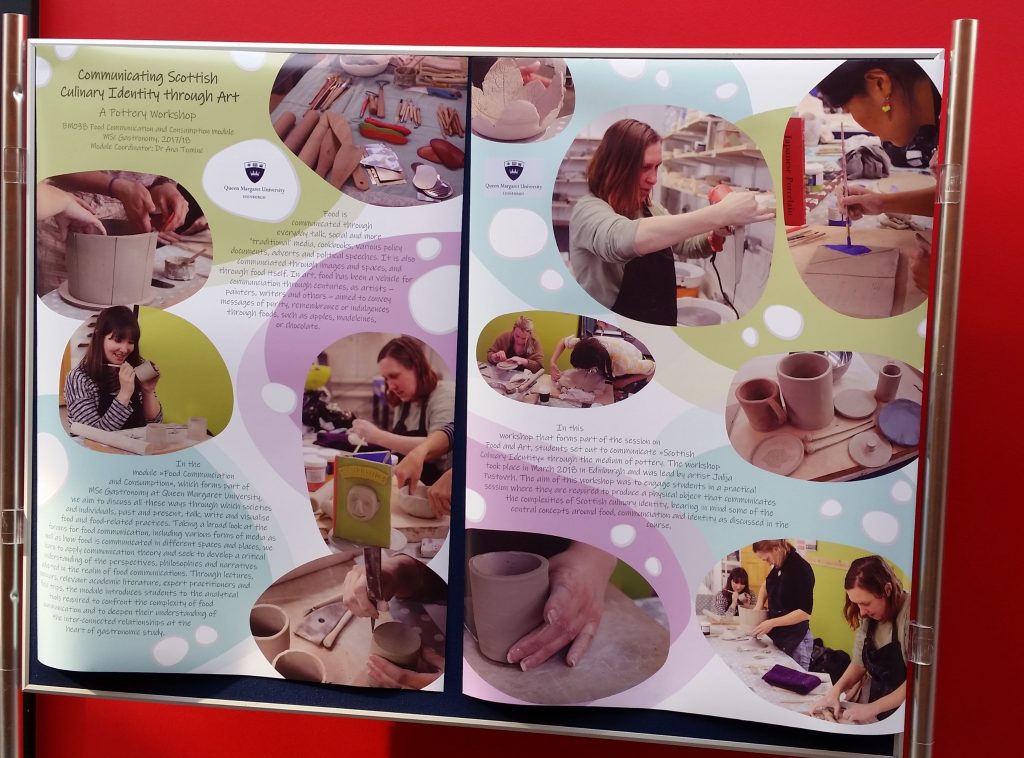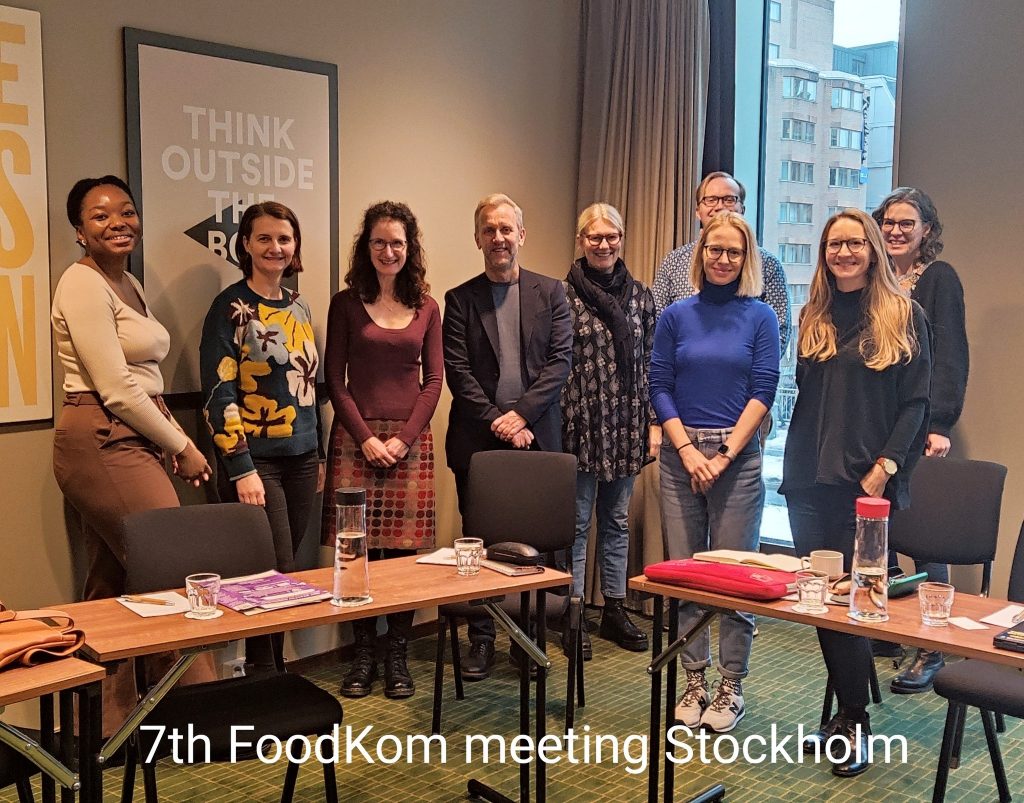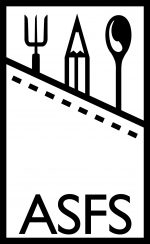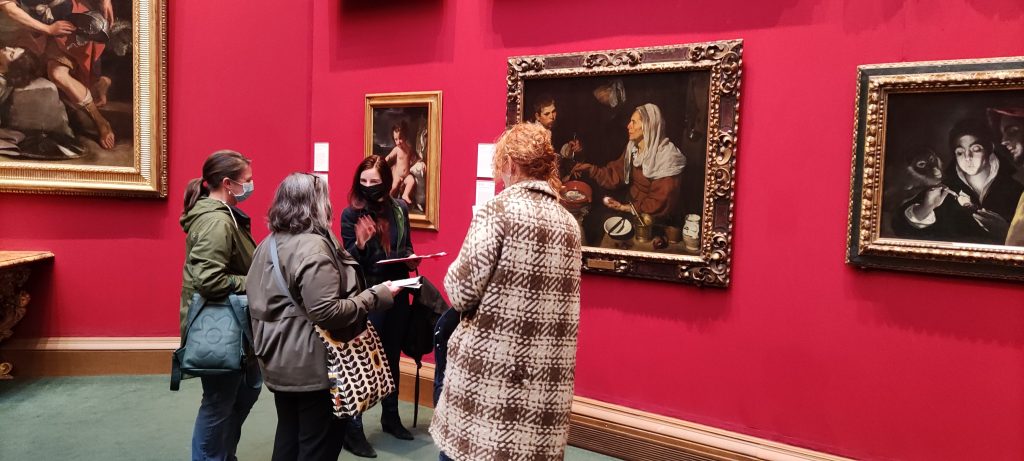
What drew you to becoming a member of ASFS?
I became a member of ASFS many years ago when I was still doing my PhD at Lancaster University (UK). The PhD was on Jamie Oliver and the recontextualization of culinary discourse to Slovenia, where I am from; this was a linguistic study but most people at the department who were doing critical discourse analysis at the time were doing something more obviously political: analyzing political speeches or newspapers to see how anti-Muslims their reporting was or were interested in gender in magazines. But my project was something different—it was on Jamie Oliver—and who did not like Jamie Oliver? So what was there to be critical about? There was a lot of misunderstanding around what I am doing and many very surprised looks.
When I discovered ASFS I found people who understood what I was doing without having to explain anything. Around that time, Signe Rousseau was also doing her PhD and she was posting all kinds of questions to ASFS members about questions that I also was interested in, like celebrity chefs, culinary discourse and so on. I felt quite at home there, even if I haven’t had an opportunity to meet some of the people I met through correspondence until 2022 when I attended my first ASFS conference in person (and it was fantastic!).
Congratulations on becoming a board member of ASFS in 2020, and now president! What are you hoping to bring to the Association, and what are you hoping for the future of ASFS and food studies?
Thank you. I was really interested to get involved because it seemed to me that European voices were missing in ASFS – this is obvious to an extent, because ASFS is mostly an American association, even if it does not see itself as such, but it does have distinctly American preoccupations, focus, scholars and so on. I wanted to contribute with a more European perspective, possibly collaborate on things like Biennial Conference on Food and Communication, which I set up in 2018. The plan is for ASFS to be involved in the conferences that happen in Europe, and so to extend its reach. This is great, I think, because food studies is a growing area of study in Europe, even if there are many places where it is still difficult for colleagues to pursue food studies research. To have an association that offers support is really valuable I think.
Your research background includes social anthropology, cultural studies, and linguistics – how do you bring these disciplines and training into your work in food studies?

I have always been interested in what people do in their everyday lives, the most mundane things, everyday things, and their ideological dimensions. When I was still a student, I remember watching Jamie Oliver on TV with my dad, and he was really annoyed at the way Oliver cooked, the way he spoke, and the way he was. My dad understood instinctively that Oliver brings something new to the culinary but also gender discourse, something which was not there before—because part of Oliver’s introduction to Slovenia had to do with introduction of these new global discourses and trends around how to be a consumer, how to be a man, and how and what to eat. Through my PhD, which was a discourse analysis of Oliver’s cookbooks and their translations, I wanted to understand what happened—in other words—why my father was annoyed with Oliver’s TV shows. I am interested in these ideological workings—in everyday discourse, through the most unlikely objects and utterances, and in popular culture. For example, my most recent project looked at the role of “bendy banana” in political persuasion before and during Brexit debate in Britain in the UK press. When asked why they voted Brexit, people were saying, because Brussels says banana should not be bendy, because cucumber should be straight – these are not rational discussions, even if they ultimately communicate dissatisfaction with something: here, food and everything that surrounds it carries all kinds of emotions, partly because food is so close to us as human beings, and so the things that are close to people’s lives, like bananas, can communicate things that cannot be communicated in other ways, because ultimately, we let them closer to us, because it is something we use, listen or talk about every day. And this interest comes from cultural studies: to look at ordinary people in their most ordinary lives, and to understand how they live and make meanings of their lives on a daily basis, also looking at popular culture. When you marry this with language and food, and you look at how in these situations language is used in relation to food, I think this is the perfect definition of my niche interest.
Jamie Oliver is a controversial figure to some of us who do food studies – could you tell us about your PhD work (completed in 2012 at Lancaster University) which was subsequently published in a book as The Discursive Construction of Class and Lifestyle: Celebrity Chef Cookbooks in post-socialist Slovenia (John Benjamins, 2017).
I started my PhD with examination of Oliver’s culinary discourse and translation of cookbooks to Slovene – I wanted to look at how these were recontextualized to a different setting using this concept from critical discourse analysis. But soon it emerged, of course totally expectedly, that in Slovenia some people figured out that such a way of writing about food and cooking on TV is successful, so they have done a similar show to that of Oliver – when I say “similar” I mean it was similar in discourse characteristics, language style, topics they included and so on, which is what I later analyzed. I wanted to see how such global discourse gets localized. So my analysis shifted a little bit to the local chefs. I compared the discourse of cookbooks published before Oliver—which I called standard—with Oliver’s translations and with the cookbooks that got published by the Slovene celebrity chefs who mannered themselves on this new style promoted by Oliver. This was a detailed language analysis of recipes and other texts inside cookbooks, things like metaphor use, description of food and people, perspective, and so on. With more standardized cookbooks you find a lot of language of nutritionism, very general references to people, third-person perspective, and almost no images. In the new, lifestyle discourse domineered cookbooks, however, language is much less standardized, there are lots of various stylistic devices used, synthetic personalization, interdiscursivity with advertising and so on, which Norman Fairclough talks about in his work on discourse of consumerism, and general changes in late modernity in the UK. I then linked this to the construction of class through lifestyle—because it was quite obvious that the Oliver modelled culinary discourse that was becoming fashionable in Slovenia could be analysed through the lens of class (in the sense used by Bourdieu), new elites that were at the same time cultural intermediaries, and the construction of what it means to be Slovene in the post-Socialist world through cooking – this national identity element was there too, quite prominently. So a very complex case, and something I haven’t really finished yet!
You are a founder of the Biennial Conference on Food and Communication – how does someone become involved in founding a conference, what does it entail, and what does the Biennial Conference on Food and Communication bring to food studies?

I founded this in 2018 and I organized the first conference at Queen Margaret University in Edinburgh, for two reasons: first, I wanted to have a food conference, as the one ASFS has for the US, which travels around universities in Europe. This makes it easier for people from various regions to participate because the cost of travel can be lower when the conference is closer to you. People with childcare issues can be away for a shorter time and so on. Other food conferences in Europe—Tours, Dublin, Copenhagen—always happen in the same location which is great, because you have this anchor point where you always return, but I thought we also needed something else. Second, most conferences are either general food studies conferences, or they tend to be leaning towards history—of course, given historians jumped on the food studies wagon early. So this conference is designed to be focused on media and communication scholars, which encompasses everyone who thinks their work fits these categories, as long as there is a focus on communication. This is also what it brings: a space to discuss food and comms-related research with colleagues from around the world, and I hope it also means that due to its travelling around Europe, more people can contribute to food studies in Europe.
I think when you have an idea you need to just find a way to do it, and so I organized it with the help of some colleagues and my PhD student. The University also helped a little bit financially, and I applied for the ASFS regional event grant, which helped enormously because we could offset some of the travel costs of participants with this money and kept the fee very low. 80 people came to the conference in the end, from 5 continents and some 30 countries, an impressive number for the first time really. The 2021 was then organized by Ljubljana University, Slovenia, (virtually), and in 2023 it will be in Orebro in Sweden. More information can be found here: foodcommunication.net
Queen Margaret University Edinburgh, where you currently are a Reader (Associate Professor), has an MSc in Gastronomy. For those who may be interested in applying to graduate school courses around food studies, could you please describe it for us?
I was employed first by QMU in order to work on the development and teaching of this programme in 2014—this is when the course was still supported by a grant from the Scottish government which has had a great interest in the development of Scottish food and drink sector for many years. Over the years, many many wonderful people passed through our course, and have contributed to the course as much as they learnt from it. Unlike many food studies programmes around, and certainly in the UK, we look at food holistically. In this, we are really unique: we have a module on food science, food systems, food communication, food culture, and food and drink specifically looking at Scotland. This way, we are able to examine any food, or food process, from all these perspectives: what does it mean from the perspective of nutrition, soil science, and agriculture? What does it communicate? What place does it have in our social lives? How is it transported to us and what’s its real cost? So once you finish, you have a pretty good idea of all things food—from politics to economics, science, and history—and students tell us this rounded knowledge helped them think through some of the pressing issues to do with food in their work, like environmental, inequality issues and so on: from small business owners to teachers, policy experts, chefs and hospitality workers in general, to those who decided to pursue their studies further. All modules also contain a number of field trips, visitor speakers, tastings, and so on that bring food closer to the classroom.
Can you tell us about Food and Cooking on Early TV in Europe, a collected volume you’ve edited for Routledge (2022)?
Of course! This is a side project of mine, which I thought about for many years before finally doing something about it. I noticed there is a gap in early food television work in Europe when I was doing my PhD, and so when I finished I published something on food television in socialist Slovenia (Tominc, 2015) because that helped me advance my argument around television food discourse change that I was doing when I was rewriting my PhD into a book (Tominc 2017). But it was pretty obvious that what would really be needed is something that speaks of early food television in Europe across the board. This being such a niche topic, the hardest thing was to find people who would be willing to write a chapter, but once I did find them, they turned out to be the most amazing bunch, and they all produced great chapters focusing on countries from Portugal, to France, Italy, UK, the Netherlands, Czechoslovakia, Eastern Germany, to Yugoslavia. It was very important to me that Europe did not mean “Western” Europe, but that the book actually contains chapters from various corners of Europe, including Portugal, where there was dictatorship after the War, Eastern Germany and Czechoslovakia “behind the Curtain” (even if historians tell me this is no longer the word to use) and the non-aligned Yugoslavia.
My own chapter in this book focuses on Slovenian chef Ivan Ivačič, who cooked on TV Ljubljana in the 1960s; what this research really shows is how incredibly inventive, resourceful, and overall creative early television chefs were, because very often there was no running water in the studio, or equipment did not work, or there was some other problem. But the audiences were very grateful for any advice too, and some of the interviews I did with now elderly then audience demonstrates the impact early food television had on their cooking practices and on their knowledge of other cuisines around the world.
Has there been a dish or recipe that’s now a part of your life that you discovered during your research?
I took most of the dishes that I sometimes now still make from Jamie Oliver when I was still doing my PhD. At that time, I read recipes all the time and I was hungry all the time. But I like – and make – many of his 30-minute meals. In there, he also has a recipe for pineapple with mint, first printed in one of his early cookbooks. This is a favorite of my mum from many years ago when she first came across Jamie Oliver’s cookbook in Slovenia, and I remember she immediately made it!

